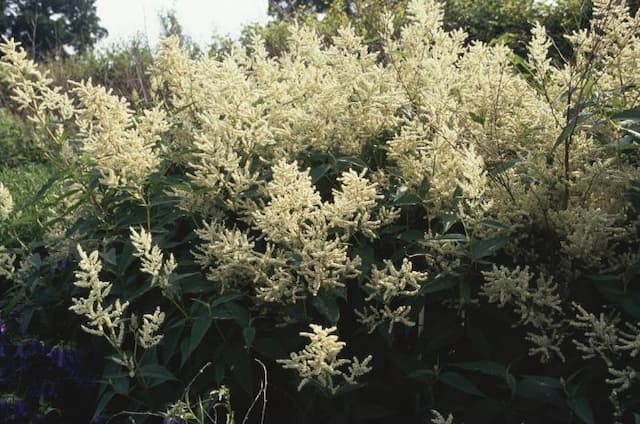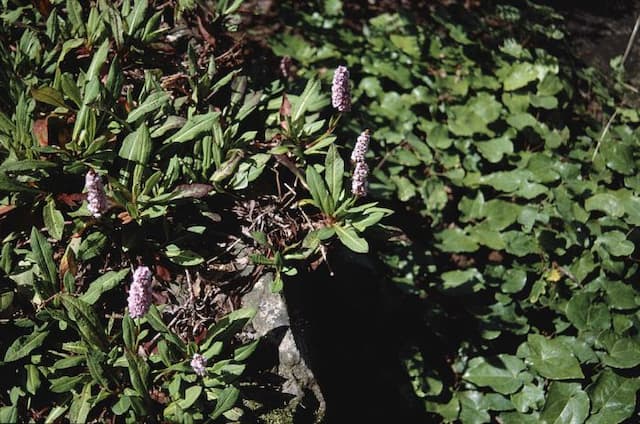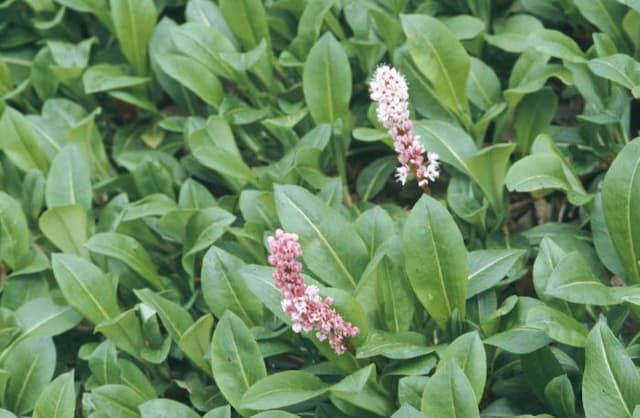Buckwheat Fagopyrum esculentum



ABOUT
Buckwheat (Fagopyrum esculentum) is a plant cultivated for its edible seeds, which are used in a variety of dishes, such as pancakes, noodles, and porridge. It is an annual herbaceous plant that can grow up to 3 feet tall and has heart-shaped leaves and white or pinkish flowers that bloom in clusters. The plant is often grown as a cover crop due to its ability to suppress weeds and tolerate poor soil conditions.
About this plant
 Names
NamesFamily
Polygonaceae
Synonyms
Common buckwheat, Saracen's corn
Common names
Polygonum fagopyrum, Fagopyrum cereale, Fagopyrum dryandrii, Fagopyrum emarginatum, Fagopyrum emarginatum, Fagopyrum fagopyrum, Fagopyrum polygonum, Fagopyrum sagittatum, Fagopyrum sarracenicum, Fagopyrum vulgare, Fagopyrum vulgare, Polygonum emarginatum
 Toxicity
ToxicityTo humans
Buckwheat is not toxic to humans and is considered safe for consumption in moderate amounts. However, some people may be allergic to buckwheat, which can cause an allergic reaction.
To pets
As for animals, buckwheat is generally safe for pets such as cats and dogs, but it should not be fed to livestock such as horses, cows, and sheep as it can cause photosensitivity and other health problems.
 Characteristics
CharacteristicsLife cycle
Annuals
Foliage type
Deciduous
Color of leaves
Green
Flower color
White
Height
3 feet
Plant type
Herb
Hardiness zones
1
Native area
Central Asia
Benefits
 General Benefits
General BenefitsNutritional Value: Buckwheat is a good source of protein, dietary fiber, minerals, and antioxidants.
Gluten-Free: Buckwheat is naturally gluten-free, making it an excellent option for people with celiac disease or gluten sensitivity.
Helps Lower Cholesterol: Buckwheat contains compounds that have been shown to help reduce cholesterol levels and promote heart health.
Supports Digestive Health: The fiber in buckwheat promotes healthy digestion and can help prevent constipation.
May Lower Blood Sugar Levels: Buckwheat contains compounds that have been shown to help regulate blood sugar levels.
Weight Management: Buckwheat is low in calories and high in fiber, making it a great food for weight management.
Versatile: Buckwheat can be used in a variety of dishes, including soups, salads, porridge, and baked goods.
Environmentally Friendly: Buckwheat is easy to grow and requires little fertilizer, making it an environmentally friendly crop. Medical Properties
Medical PropertiesLowers Cholesterol: Buckwheat contains compounds called flavonoids which are known to lower LDL (bad) cholesterol levels.
Regulates Blood Sugar Levels: Buckwheat contains fiber and resistant starch which slow down the absorption of glucose in the body, keeping blood sugar levels in check.
Aids Digestion: Buckwheat is a good source of fiber, which helps to regulate bowel movements and prevent constipation.
Gluten-Free: Buckwheat is naturally gluten-free, making it a great alternative for people with gluten intolerance or celiac disease.
Antioxidant Properties: Buckwheat contains antioxidants like rutin and quercetin, which help to protect the body against damage from free radicals.
Improves Heart Health: The compounds found in buckwheat are known to improve heart health by reducing inflammation, lowering blood pressure, and improving cholesterol levels.
May Help with Weight Loss: Buckwheat is low in calories and high in fiber, making it a great addition to a weight loss diet. Air-purifying Qualities
Air-purifying QualitiesBuckwheat is not commonly known for its air purifying qualities.
 Other Uses
Other UsesBuckwheat is used as a cover crop, as it can grow in poor soil conditions and helps to suppress weeds, prevent soil erosion, and improve soil health.
Buckwheat hulls are used as a filling for pillows and cushions because they are firm and conform well to the body, providing support and comfort.
Buckwheat is used in traditional Japanese soba noodles, which are considered a healthy alternative to regular wheat-based noodles.
Buckwheat honey is prized for its rich flavor and is used as a natural sweetener in various recipes.
Interesting Facts
 Feng Shui
Feng ShuiBuckwheat is not typically used in feng shui.
 Zodiac Sign Compitability
Zodiac Sign CompitabilityBuckwheat is not typically used in astrology.
 Plant Symbolism
Plant SymbolismIt is often considered a symbol of prosperity and good luck in various cultures. In some regions, it is used as an offering during religious ceremonies or festivals, while in others it is used to make traditional dishes such as buckwheat noodles or pancakes. Some people also use buckwheat pillows or cushions for their hypoallergenic properties and ability to conform to the shape of the body.
 Water
WaterBuckwheat generally prefers moist soil, so it is important to keep the soil consistently moist but not waterlogged. This can be achieved through regular watering, especially during dry periods.
 Light
LightBuckwheat thrives in full sun, but it can tolerate some shade as well. Ideally, it should receive at least six hours of direct sunlight per day.
 Temperature
TemperatureBuckwheat is a cool-season crop and can tolerate temperatures as low as 40°F (4°C). However, it grows best in temperatures ranging from 60-75°F (16-24°C).
 Pruning
PruningBuckwheat does not require pruning.
 Cleaning
CleaningNot needed
 Soil
SoilThe best soil for buckwheat is well-draining soil with a pH between 5.5 and 6.5. Buckwheat prefers a slightly acidic soil.
 Repotting
RepottingBuckwheat is typically grown as an annual crop and does not need to be repotted.
 Humidity & Misting
Humidity & MistingBuckwheat can tolerate a range of humidity levels, but prefers a moderate to low humidity environment.
 Suitable locations
Suitable locationsIndoor
Not growing.
Outdoor
Growing 1 growing season as a crop
Hardiness zone
5-11 USDA
 Life cycle
Life cycleBuckwheat is an annual plant that completes its life cycle within one year. It grows quickly and can reach maturity within 8 to 10 weeks after planting.
Planting: Buckwheat can be planted in the spring, after the danger of frost has passed.
Germination: Buckwheat seeds germinate quickly, usually within 3 to 5 days.
Vegetative growth: After germination, buckwheat enters a period of vegetative growth. During this stage, the plant develops leaves and stems.
Flowering: Buckwheat produces small, white or pink flowers in clusters. Flowering typically occurs 4 to 6 weeks after planting.
Fruiting: After flowering, the plant produces small, three-sided fruit called achenes. The achenes contain the edible seeds that can be harvested.
Harvesting: Buckwheat is typically harvested in late summer to early fall, approximately 10 to 12 weeks after planting. The plant is ready for harvest when the leaves and stems turn brown and dry. The achenes are harvested by cutting the plants at the base and threshing the seeds from the dried stems.
After harvest, the plant dies and should be removed from the field. Propogation
PropogationPropogation time
Spring
Buckwheat can be propagated from seeds. The best time to plant buckwheat is in the spring, after the last frost. Buckwheat seeds should be sown in well-draining soil, and the soil should be kept consistently moist until the seeds germinate. Buckwheat plants typically mature and flower in about 70-90 days, after which the seeds can be harvested. Once the seeds have matured and turned brown, they can be harvested by cutting the entire plant and allowing it to dry for several days. The seeds can then be threshed and stored for later use.
 Pests
PestsSpider mite, Thrips, Aphid, Japanese beetle
 Diseases
DiseasesPowdery mildew

![Red bistort [JS Seven Oaks Village]](/_next/image?url=https%3A%2F%2Fplants-admin.emdemapps.com%2Fimages%2Fplants%2F%2Fimages%2F604b56557c0e3.png&w=640&q=75)







